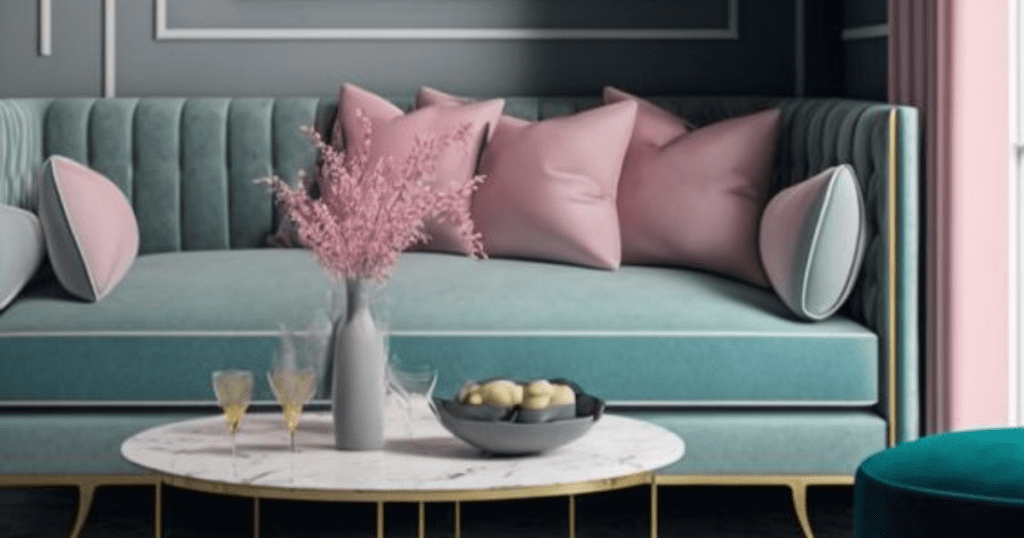Decorating in the simplistic style of minimalism embodies more than just surface aesthetics, it encompasses a philosophy of living that prioritizes cleanliness, tranquillity, and intentionality.
These guiding principles not only dictate the physical design of a space but also influence the mindset and lifestyle of those inhabiting it. By embracing minimalism, individuals can streamline their surroundings, free themselves from unnecessary distractions, and focus on what truly matters.
Contrary to common misconceptions, minimalist design is not synonymous with boredom, impersonality, or a lack of character. Instead, it represents a deliberate choice towards efficiency and purposefulness.
This is achieved through the intentional exclusion of excess clutter and ornamentation, minimalist interiors allow the essence of the homeowner’s personality and priorities to shine through. By utilising simple forms, muted colour palettes, and sleek materials, minimalist spaces achieve a delicate balance between functionality and elegance.
Drawing inspiration from influential movements such as Germany’s utilitarian Bauhaus movement, as well as the simplicity of Scandinavian and Japanese design styles, minimalism offers a refreshing departure from the over-accessorized interiors prevalent in contemporary culture.
In living rooms and bedrooms, the minimalist design fosters a serene ambience conducive to relaxation and introspection, while in kitchens and bathrooms, it imbues spaces with a sense of cleanliness and modernity.
Despite its seemingly effortless appearance, decorating in the minimalist style requires careful consideration and planning.
Every element in the space must align with the overarching principles of simplicity and purpose.
The rewards of a well-executed minimalist design are plentiful, offering not only a visually pleasing environment, but also a sense of clarity, calm, and harmony in everyday living.
Elements of Minimalist Design
The mantra of minimalism is “less is more”.
Each element in a room should have a place and a purpose, which means you won’t often find many superfluous items or needless decorative details in minimalist homes.
Smart organisation is essential, and storage is typically streamlined or hidden away to avoid visual clutter. On furniture and accessories, clean lines and simple shapes help maintain a streamlined look. The overall effect of a minimalist room is generally open and airy, with an emphasis on natural light and plenty of breathing room.
Minimalist colour schemes often start with a neutral foundation, but they’re not limited to shades of white. Neutral pastel colours, including grey, and wood tones are commonly used in minimalist designs.
The key is to keep the colour palette mostly monochromatic with only slight variations in shade and tone.
How To Decorate Your Home in A Minimalistic Design
Follow the steps below to achieve a minimalist aesthetic in your living space:
- Declutter and Simplify: Begin by decluttering your home, getting rid of unnecessary items, and keeping only what you truly need or love. Embrace a less-is-more mindset, eliminating excess furniture, decor, and knick-knacks.
- Focus on Functionality: Each element in your home should serve a specific purpose. Consider the function of each room and select furniture and decor items accordingly. Opt for multifunctional pieces that maximize utility without sacrificing style.
- Choose Clean Lines and Simple Shapes: When selecting furniture and accessories, prioritize clean lines and minimalist shapes. Look for pieces with sleek, understated designs that contribute to the overall simplicity of the space.
- Embrace Neutral Colours: Start with a neutral colour palette as the foundation of your minimalist design. Whites, greys, beiges, and muted tones create a serene and timeless backdrop that allows other elements to stand out.
- Create Visual Balance: Maintain visual balance and harmony by carefully arranging furniture and decor items. Avoid overcrowding the space and leave plenty of breathing room between objects. Aim for symmetry and simplicity in your layout.
- Maximize Natural Light: Capitalize on natural light to enhance the openness and airiness of your minimalist space. Keep window treatments minimal or opt for sheer fabrics that allow light to filter through unimpeded.
- Incorporate Texture: Add visual interest and depth to your minimalist interior by incorporating texture. Consider layering different textures such as smooth metals, soft fabrics, and natural fibres to create a tactile and inviting environment.
- Curate Thoughtfully: Be selective about the items you bring into your home, opting for quality over quantity.
Conclusion
If you follow the above steps, you can create a haven that nourishes your soul and inspires a sense of calm and contentment.
As you embark on your minimalist design journey, remember that it’s not just about creating a picture-perfect interior, but also about cultivating a mindset of mindfulness and appreciation for the things that truly matter to you.
So, whether you’re downsizing to a smaller space, seeking to reduce the chaos of everyday life, or simply drawn to the timeless elegance of minimalism, know that you have the power to transform your home into a place of beauty, tranquillity, and purpose. By embracing simplicity in design, you can create a space that not only looks good but also feels good.


